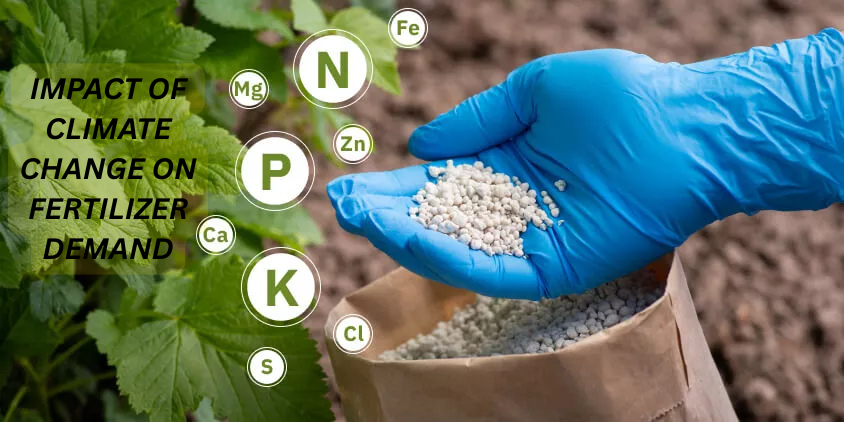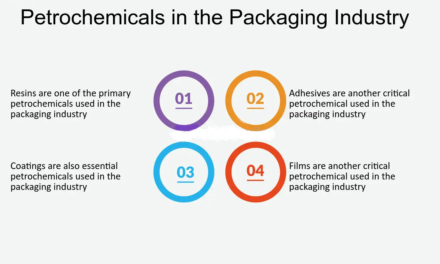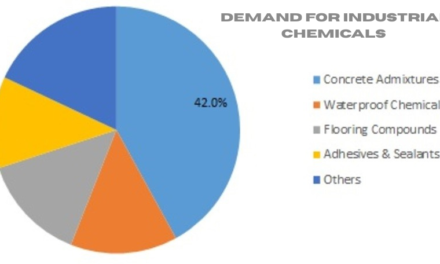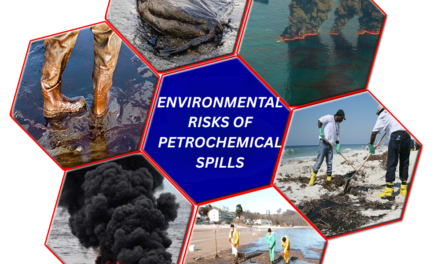Climate change is significantly impacting fertilizer demand by altering agricultural practices, crop patterns, and soil health. These changes are driven by rising temperatures, altered precipitation patterns, extreme weather events, and increasing atmospheric CO₂ levels. Here’s a detailed analysis of how climate change is reshaping fertilizer demand:
1. Increased Nutrient Demand Due to Crop Stress
- Higher Crop Stress:
- Rising temperatures and erratic weather patterns stress crops, leading to increased fertilizer use to maintain yields.
- Nutrient Uptake Challenges:
- Soil nutrient availability decreases in degraded or waterlogged soils caused by extreme weather, requiring additional fertilizer application.
- Impact:
- Farmers may increase nitrogen, phosphorus, and potassium (NPK) applications to compensate for nutrient losses and ensure crop growth.
2. Changes in Crop Patterns
- Shifting Crop Zones:
- Crops are migrating to new regions due to changing climate conditions, altering local fertilizer requirements.
- Example:
- Traditional crops in tropical regions may move to temperate areas, while marginal lands may require fertilizers to support unfamiliar crops.
- Introduction of New Crops:
- Farmers may adopt new crops that demand different nutrient ratios, driving shifts in fertilizer formulations.
3. Altered Growing Seasons
- Longer Growing Seasons:
- Warmer climates may extend growing seasons, increasing the number of crop cycles per year and fertilizer demand.
- Shortened Growing Periods:
- In regions with water scarcity or extreme heat, shorter growing periods may concentrate fertilizer use in a limited timeframe.
- Impact:
- Fertilizer application schedules and quantities may need adjustment to align with changing agricultural timelines.
4. Soil Degradation and Erosion
- Nutrient Loss:
- Extreme weather events like heavy rains and floods wash away topsoil, depleting essential nutrients and increasing fertilizer needs.
- Acidification and Salinization:
- Rising temperatures and irrigation misuse can lead to soil acidification and salinity, requiring fertilizers tailored to degraded soils.
- Impact:
- Greater reliance on soil amendments and micronutrient-enriched fertilizers to restore soil fertility.
5. Increased Atmospheric CO₂ Levels
- Enhanced Plant Growth:
- Elevated CO₂ can enhance photosynthesis and biomass production, increasing nutrient uptake and fertilizer demand.
- Nutrient Dilution:
- Faster plant growth under high CO₂ levels may lead to nutrient dilution in crops, requiring higher fertilizer applications to maintain nutritional quality.
6. Water Scarcity and Irrigation Needs
- Fertigation Demand:
- In water-scarce regions, fertilizers integrated with irrigation systems (fertigation) may see increased demand for precise nutrient delivery.
- Soil Moisture Variability:
- Fluctuating soil moisture levels may reduce natural nutrient mobility, increasing fertilizer application frequency.
7. Increased Reliance on Precision Agriculture
- Site-Specific Fertilization:
- Climate variability drives adoption of precision agriculture technologies to optimize fertilizer use.
- Example:
- Sensors and drones monitor soil and crop conditions, guiding targeted fertilizer applications to address specific climate-induced stressors.
8. Demand for Specialized Fertilizers
- Enhanced Efficiency Fertilizers (EEFs):
- Climate change increases the need for fertilizers that minimize losses due to volatilization, leaching, and denitrification.
- Examples:
- Slow-release fertilizers for drought-prone regions.
- Nitrification inhibitors to reduce nitrous oxide emissions.
- Micronutrient-Enriched Fertilizers:
- Crops may require more micronutrients like zinc, iron, and boron in stressed environments, driving demand for specialty fertilizers.
9. Regional Variations in Fertilizer Demand
- Tropical Regions:
- Increased rainfall and soil erosion may drive higher demand for fertilizers to replenish lost nutrients.
- Arid Regions:
- Water scarcity and salinity challenges may boost demand for fertigation systems and saline-tolerant fertilizers.
- Temperate Regions:
- Warmer climates may extend growing seasons, increasing fertilizer use for additional crop cycles.
- Polar Regions:
- Thawing permafrost may open new agricultural areas with poor nutrient content, requiring significant fertilization.
10. Rising Costs and Resource Constraints
- Higher Production Costs:
- Climate policies targeting emissions from fertilizer production may increase costs, affecting affordability and demand.
- Limited Access:
- Farmers in vulnerable regions may face challenges in accessing fertilizers due to supply chain disruptions and price volatility.
11. Increased Focus on Sustainability
- Shift to Biofertilizers:
- Rising awareness of climate change’s impact encourages adoption of biofertilizers and organic alternatives to reduce environmental footprints.
- Carbon-Neutral Fertilizers:
- Demand for fertilizers produced with green ammonia and renewable energy sources is growing, driven by climate-conscious consumers and policies.
12. Policy and Regulatory Impact
- Emission Reductions:
- Policies limiting nitrous oxide emissions from fertilizers are encouraging innovation in low-impact products.
- Subsidies for Climate-Resilient Inputs:
- Governments are incentivizing farmers to adopt climate-resilient fertilizers and technologies.
- Carbon Credits:
- Farmers adopting sustainable fertilizer practices may benefit from carbon credit schemes, influencing fertilizer choices.
13. Implications for Food Security
- Increased Fertilizer Demand for Staple Crops:
- Growing populations and climate stress on food systems will amplify the need for fertilizers to sustain yields.
- Focus on Resilient Farming:
- Adoption of climate-smart agriculture practices, including efficient fertilizer use, will be crucial to address food security challenges.
Conclusion
Climate change is reshaping fertilizer demand by altering crop patterns, increasing nutrient requirements, and driving innovation in sustainable products. As agriculture adapts to changing conditions, the industry must focus on enhanced efficiency fertilizers, precision technologies, and bio-based alternatives to support farmers while minimizing environmental impact. These trends will be critical in ensuring global food security in a climate-challenged future.
Hashtags
#ClimateChangeImpact #ClimateSmartAgriculture #GlobalWarmingEffects #AgricultureAndClimate #FarmingInClimateCrisis #FertilizerDemand #SmartFertilizers #AgricultureInputs #EfficientFertilization #FertilizerTrends #SustainableFarming #EcoFriendlyFertilizers #ClimateResilientAgriculture #SustainableAgriculture #GreenFarmingPractices #SoilHealth #CropResilience #SustainableSoils

















